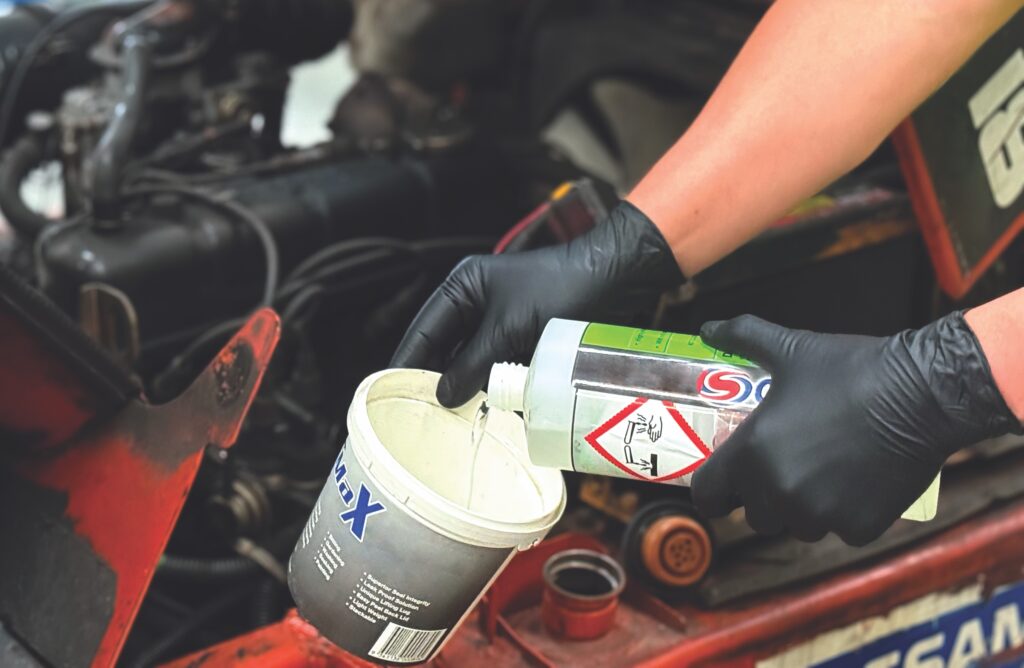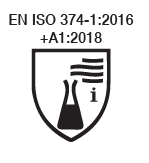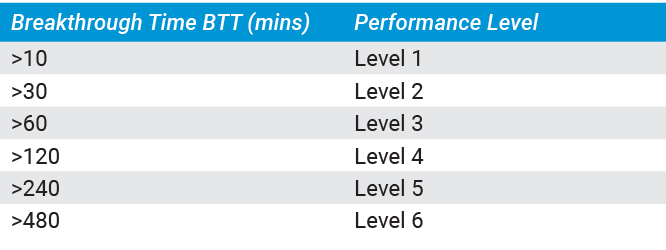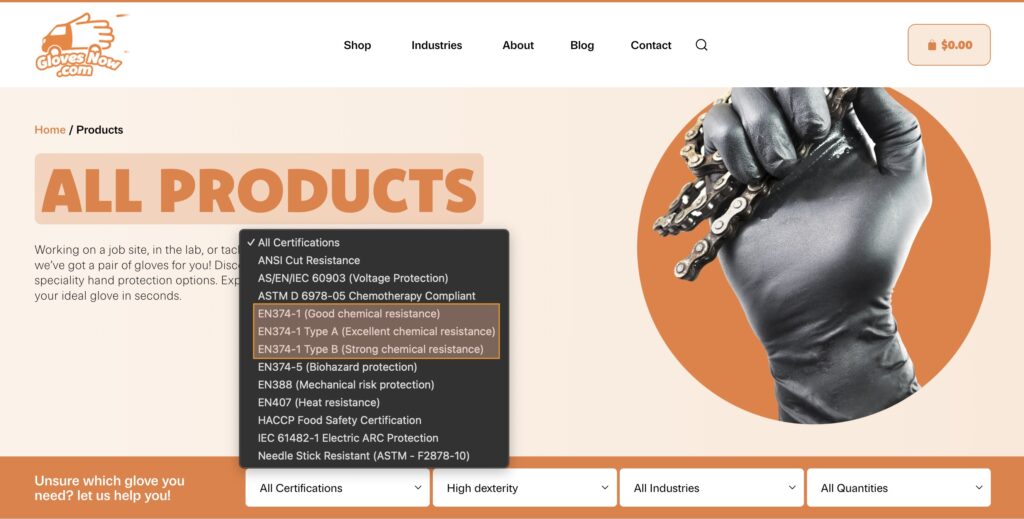
Over 15,000 chemicals are used commercially and industrially worldwide.
Since we can’t list every single chemical hazard a single glove is effective against, EN374 uses 18 test chemicals to give the best overview.
To understand a glove’s chemical resistance, keep reading.
Quick note: Glove standards are a guide only. For specialised applications, contact your glove provider.
A glove tested against EN374 will have the symbol below displayed.

This table is a list of all 18 test chemicals and their related letters. Gloves are tested against all 18, and are assigned the related letter if proven effective.

Testers record how long a glove withstands a chemical as the breakthrough time, categorised into a 1-6 performance level.
Manufacturers don’t typically list these performance levels, but if it’s crucial to your job, your trusted glove supplier will usually be able to provide the data.

Next, gloves are categorised as Type A, B, or C, depending on how many chemicals they withstand during testing.

This standard does not test some common chemicals such as Unleaded Petrol, Methyl Ethyl Ketone, Xylene and Skydrol. If you use these chemicals, contact sales@glovesnow.com to request a chemical data sheet on the glove you wish to use.

To learn more about other glove standards, click here